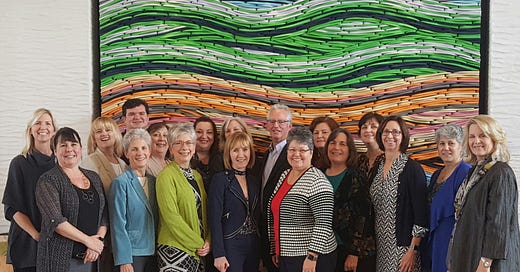Helping helpers break the rules — or remake them
Reimagining professional boundaries helped us take on the problem of nurse staffing
My years working with helping professionals have taught me the necessity of reckoning with rules. As somebody who cut his teeth doing strategy and innovation, I used to say, “Let’s throw out the rules! Imagine whatever you want!” That doesn’t work so well with the helpers and healers who have negotiate those rules every day. But I’ve found other approaches to change that do.
I first felt this in my bones at a retreat of leaders and thinkers convened by the American Association of Critical-Care Nurses. The meeting marked the beginning of my work with AACN on nurse staffing and healthy work environment issues, which continues today. The big idea that emerged from the meeting was that nurses needed to engage more directly with healthcare management to articulate their value — I nicknamed this “the great summit between the nurses and the suits.” I’m happy to say our view is now closer to common sense in health care, though not close enough.
What I remember most from that meeting, though, was the way the nurse leaders worked their way toward challenging some of the norms of their profession. We began the meeting asking how the team might act if they were “lords of the health care system” — a typical enough way to engage a group in articulating its ideals. But I also wanted to capture what might be best for the nursing profession. So after a lunch break, I asked the group to consider the needs of the profession as if it were their patient.
As it turned out, there were a lot of conditions to list in the patient’s file. She — we quickly settled on she, in spite of ourselves — had been through a lot, and this was before covid even. But the group landed on the idea that what the patient really needed was not any kind of medical treatment, but support in articulating and maintaining boundaries in her life. Those boundaries were frequently disrespected in the past. Her standards had risen in recent years, and the people around her needed to understand that.
This switch in language from rules to boundaries empowered the group, who pushed their ideas even further the next day. I think it came back to the idea that while “rules” feel external and punitive, “boundaries” are healthy signs of a fully realized identity. Boundaries are also more flexible, experimental, and organic. When the leaders gave themselves permission to imagine new boundaries for their profession, they found that unhelpful “rules” soon fell away as if they had never been.
Especially after the pandemic, we are in a time when many professional boundaries are in flux. How do ideas about professional boundaries help and hurt your work? How would you like those ideas to change? I’d love to get into it with you, no matter what kind of helper you may be.




When I think of boundaries, I'm reminded of the boundaries within our own bodies, boundaries that are permeable or semi-permeable or impermeable. Our bodies are always adapting, always changing. I suspect permeability is a necessary condition for adaptation and change to occur. I wonder about institutional boundaries, which are permeable or semi-permeable and how, which are impermeable and why.